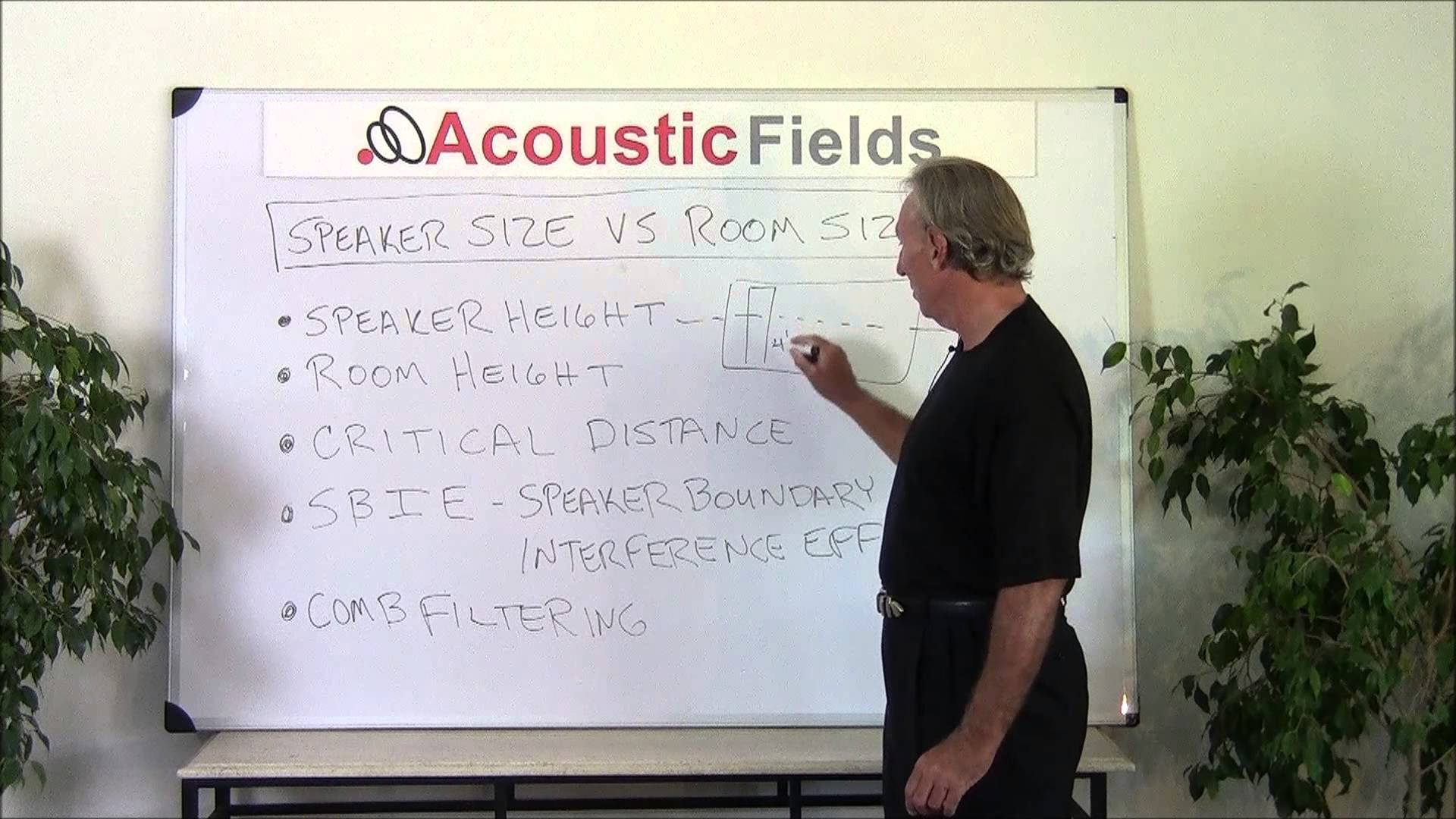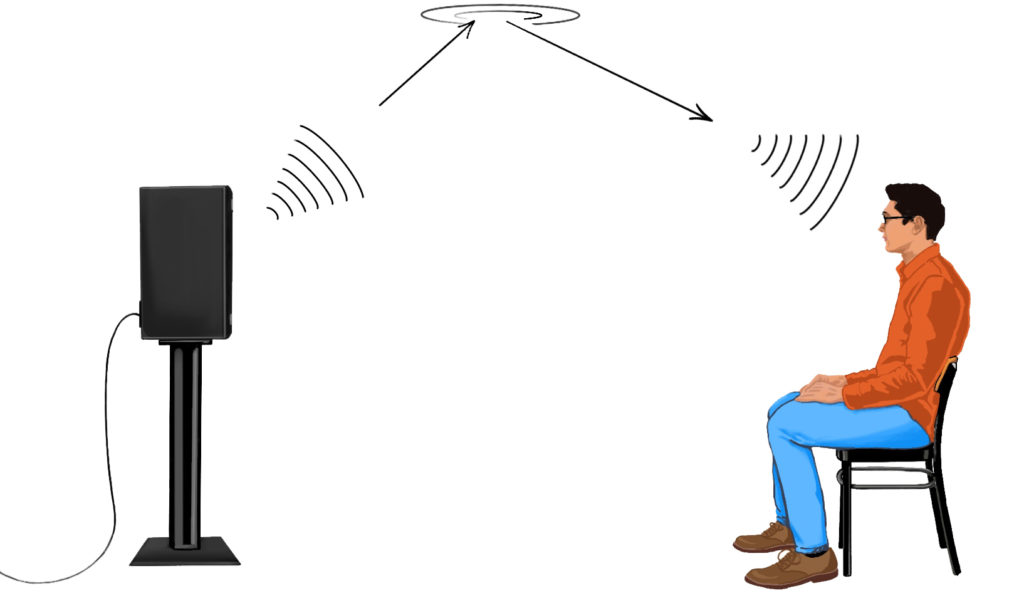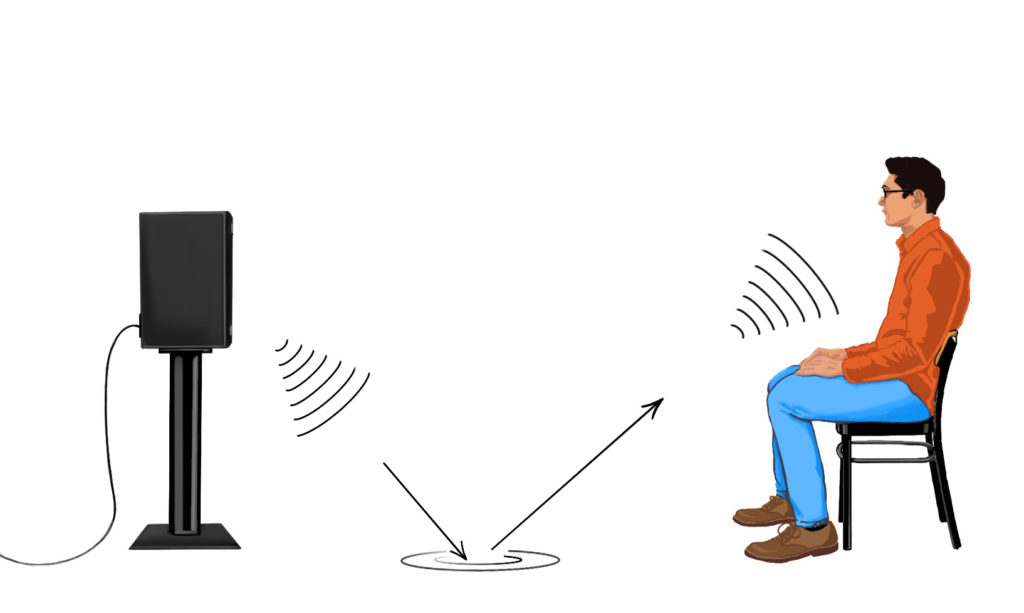There has been much progress in speaker design and room ratios. We have updated this blog to reflect those changes. Updated on October 18, 2019
The speaker size vs room size debate has been going on for years. About the only thing everyone can agree upon is that they both must be considered together. Just like listening and speaker positions have their one or two spots that will work in any given sized room, speaker size and room size must be matched so that one is not interfering with the other. Rather than plugging information into a speaker room size calculator, let’s take a look at why the dimensions of the room are so important.
I made this video to help give you a clearer understanding of this issue.
If the low-frequency driver diameter is too large for the room, you just compound the room modal issues. If the low-frequency driver is too small, you leave your musical presentation anemic when it comes to bass attack and decay. The speaker and room size relationship is also the most misunderstood relationship when it comes to small room acoustics, especially in my experience, among Audiophiles. You must watch the physical size of your loudspeaker and make sure it will not only physically fit but also acoustically fit into your room.
What Is The Correct Ratio of Speaker to Room Size?
If your room ceiling height is 8′, should you put a 6′ tall speaker in it? If your ceiling height is 10′, should you put a 6′ tall speaker in it? Would it be better acoustically and monetarily for you to look at a smaller speaker, such as a 4′ tall speaker in a room with an 8′ ceiling? Why are room height and speaker height part of the speaker size vs room size debate? Why is low-frequency driver diameter important when we are considering placing speakers within a room? Why do we have to consider room volume and driver diameter in order to achieve some type of sonic balance? It is speaker height and low-frequency driver width along with how many low-frequency drivers should I have in my room. All of these variables are part of the speaker size vs room size debate. Not all of them can be addressed in a speaker room size calculator either, these questions need to be uniquely answered based on your specific room and speaker size.
Floor And Ceiling Reflections
The first reflected energy to really reach our listening position is the reflection from our floor and ceilings. If our speaker height is too close to the ceiling then we are adding more ceiling reflections to intermix with the direct sound. This creates reflection time delays that must be dealt with along with the sidewall reflections. We also create an SBIE or speaker boundary interference effect where the small distance between the ceiling and the speaker will start to have a comb filtering effect going on as reflections from speaker sound strike the ceiling, then strike the speaker and then back to striking the ceiling again. This comb filtering effect can create phantom images that will produce audible distortions from that area.
- Sound Reflection Off of the Ceiling
- Sound Reflection Off of the Floor
This floor to ceiling height can not be underestimated. The reflections from the floor and ceiling strike your ears first before any of the sidewall reflections. You are sitting on the floor so your proximity to floor surface produces reflections that are distortion. The top of the speaker and the ceiling height produce reflections that are determined by the proximity of the speaker to the ceiling. Both of these reflections have a negative impact on sound stage width and height. This room distortion caused by these pairs of reflections can be heard in your mixes and personal listening rooms.
ROOM SIDE / SPEAKER SIZE: http://www.audiogurus.com/learn/speakers/what-size-speakers-room/85
SPEAKER SIZE: https://www.cnet.com/news/size-matters-are-your-speakers-too-big-or-too-small-for-your-room/
Speaker Driver Diameter
If your low-frequency drivers have large diameters, say 12″, 15″, even 18″ then you must have a room volume that can support all of this low-frequency energy, the speaker vs room size relationship must be taken into consideration. Low-frequency energy must be controlled prior to its introduction into the room based upon proper driver diameter matching with the room volume. Once it is released into the room, you must manage it through the proper low-frequency sound absorption technology, which is not the easiest approach. It is better to manage low-frequency room distortion producing room modes through both energy containment and proper sound absorption technologies.
In Summary
This discussion and video have covered some of the variables that you must consider when selecting a speaker to fit both physically and acoustically within your room. A speaker room size calculator is a good starting point, but we need to look at the individual variables when constructing a layout. We covered driver size and room volumes, so you can appreciate and understand that when it comes to the speaker and room size relationship, it is better to consider smaller speakers in today’s smaller rooms.
I hope this explanation helped. Please leave any comments below so I can get back to you. Don’t be afraid to hit those Facebook like, Google+ and Twitter buttons on the left hand side so other people can see this post. If you would like a free analysis of your room, please complete the form on this page www.acousticfields.com/free-room-analysis/ and we will run a free analysis for you. And if you want to learn more about this subject please sign up for our free room acoustic treatment videos and ebook which provide step by step instructions. Get instant access by signing up now.
Thanks
Dennis










Interesting and creative descriptions of the room acoustics. Unfortunately these don’t come close to the definitions in the Acoustics books I own and study. Comb filtering is not even close to matching what I measure and observe. Critical distance actually changes with frequency. If I want to sit at critical distance in my control room I have a problem because this is a broad area as at higher frequencies it is in quite a different location to the low frequency location.
Hi Gordon,
You are correct. Critical distance is frequency dependent and your example shows how different frequencies react differently in different parts of the room. This is a good example of critical distance illustration that a lay person can understand. We find so many people, both amateur and professional, that just don’t comprehend just how large of a sonic signature it imposes upon their presentations. If we can get people sitting in a chair, hopefully with casters, and moving back and forth through the room center line, we can show people in their own rooms, a small portion of the impact the room has.
Thanks
Dennis
While your products may improve some situations, the ignorance of physics and acoustics which you display is profound.
Hi Trevor,
Opinion’s vary. Our goal with our video and blog programs is to assist the layman with the beginning of understanding the large impact that our room’s have on our music and vocals. We make every effort to make the complicated simple which I’m sure you can appreciate.
Thanks
Dennis
Great info denis. Keep up the good work.
Thanks Dean.
Thank you for your time, effort and willingness to share your knowledge. I’m signing up !! Richard
Keep up the good work.
I do not have an acoustic background so thanks a lot for making it precisely clears for us normal people.
My room size is 15 feet x 10 feet (height is 9 feet). Should i go for bookshelf speakers or satellites speakers. I intend to put 5.1 home theater system here.
Any ideas / tips will be welcomed.
Regards,
Ali
Hi Ali,
I will need more information in order to assist you. Go to: https://acousticfields.com/free-acoustic-treatment-room-analysis-tell-us-room/ Photos of all room surfaces are welcome.
I am going to build a small one room outside building for my stereo only. I have a mint inside and out Marantz 2500-250 wpc. speakers are 4 Klipsch cornwall 3’s. My question is how long, ceiling height, and width of this building would be best? Thanks Jim V
Jim, With horn speakers you need width. I would start with a 23′ width, 14′ h x 27′ l
Hi Dennis, I have a Yamaha rx-v1500 receiver, klipsch rf5 towers,sc1 center,rs35 rears and a use 12 subwoofer..room size is 16’wide and 20’long seats are set at 16′..I listen to music and watch movies..what do you think of my components and what’s lacking..the ceilings are high unfortunetly 32’vaulted..center channel seems small..and sounds like I need more sub unit..I like Klipsch brand..whats your suggestion to enhance my listening ecperience…Thanks Clint.
C, Fill out the information in this link : https://acousticfields.com/free-room-analysis/. Lets see what your issues are first. Photos of all room surfaces can be attached to link form.